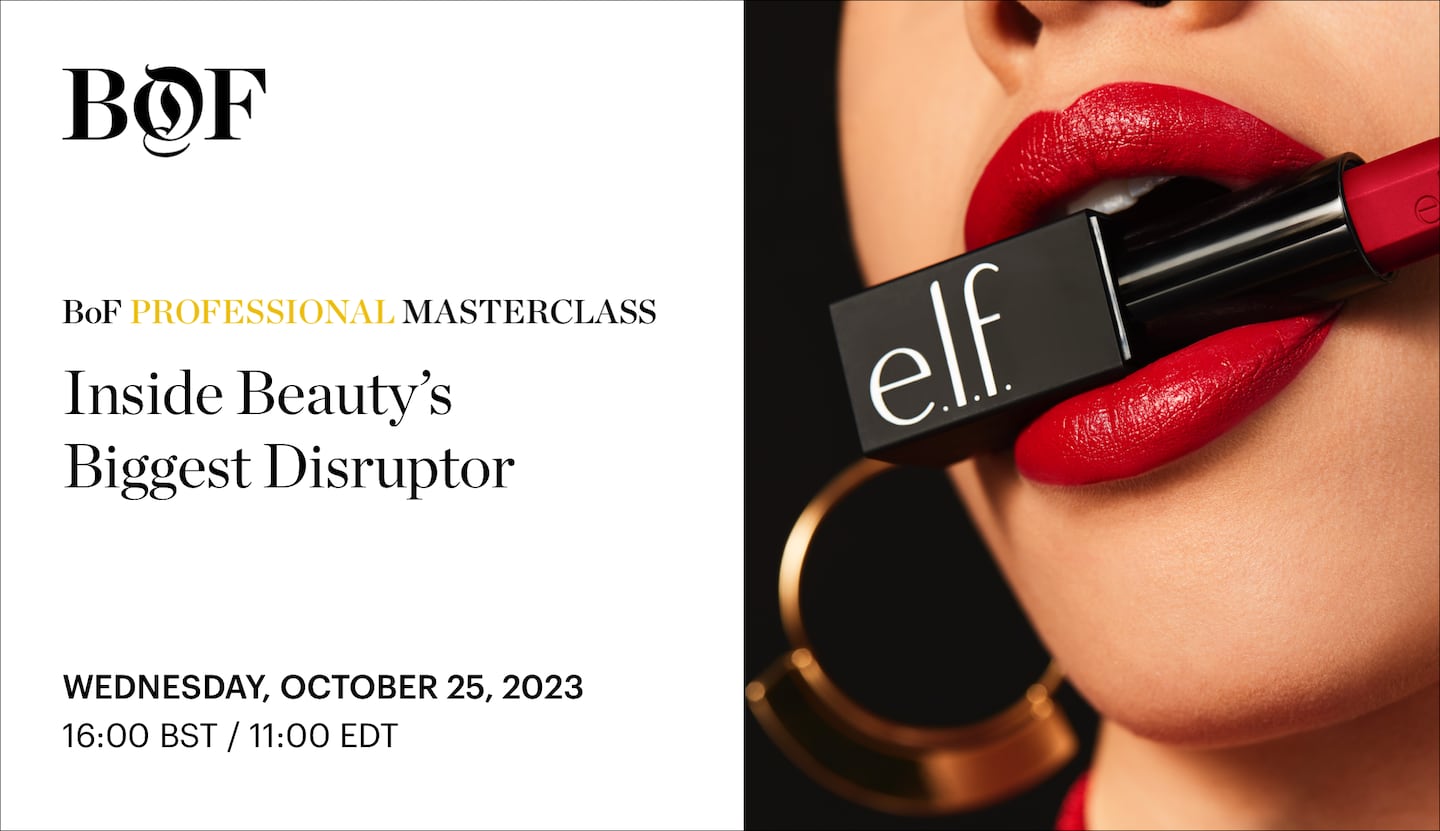The Business of Fashion
Agenda-setting intelligence, analysis and advice for the global fashion community.
Agenda-setting intelligence, analysis and advice for the global fashion community.

Created by BoF’s journalists and editors, in conjunction with our wider network of leading fashion creatives, thought-leaders, and innovators, Masterclasses are in-depth webinars with supporting resources, designed to deliver key learning outcomes on critical industry topics.
Watch on demand here:
With its strategy rooted in customer centrism, faster-than-ever product turnarounds, and an even quicker social media plan, E.l.f. has rapidly risen from disruptor to incumbent in the global beauty industry. Its recent acquisition of skin care brand Naturium pushes E.l.f.’s presence in the category to 18 percent of sales, and it continues to report impressive quarterly sales growth.
“Our approach is to constantly test, learn and try new things,” said Tarang Amin, E.l.f’s chief executive. “It’s not just about the numbers, but about long-term potential.”
On the latest BoF Professional Masterclass, Priya Rao, The Business of Beauty’s Executive Editor, in conversation with E.l.f.’s chief executive Tarang Amin, dive into E.l.f.’s journey and share insights into the skills and strategies required to scale, and maintain, a beauty brand.

Exclusive to BoF Professional members.
E.l.f.’s story is about how an upstart-turned-industry juggernaut brought its growth ambitions to life, with some tough lessons along the way.
Black founders carry a markedly higher burden when it comes to educating investors on the value and viability of their business ideas — but there is an art and science behind knowing when your brand is ready and what kind of investors will be the best fit.
Landing a retail partnership is often seen as a major milestone for beauty founders — but it brings a bevy of new challenges, from the logistical complexities to setting a marketing budget. Black entrepreneurs, who typically have far less capital to work with, often face tough choices.
The firm has been working on a listing since at least 2022, with previous attempts buffeted by volatile markets.
In a three-part series, The Business of Beauty explores how Black founders Monique Rodriguez, Danessa Myricks and more built, launched and scaled their multi-million-dollar businesses. In part one, a look at how these entrepreneurs found their niche and harnessed early lessons that were critical to their growth